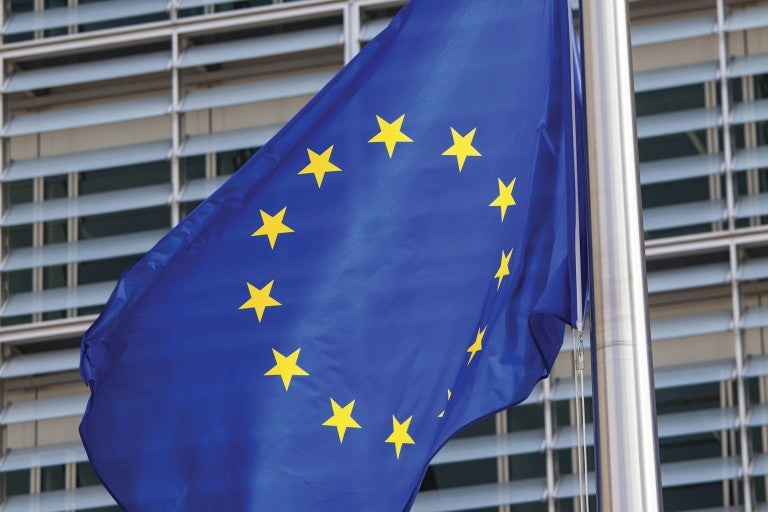April 17, 2020 — New York
Ending Israel’s prolonged political stalemate by creating an emergency national unity government is potentially one positive outcome of the battle against the deadly Coronavirus. With prodding from President Reuven Rivlin, and the prospect of a fourth election looming, Blue and White party head Benny Gantz and Likud chair Benjamin Netanyahu agreed to launch direct talks several weeks after the March 2 elections.
In Israel, negotiations in the days following a national election is a typical, indeed necessary, feature of the country’s dynamic democracy. No major political party has ever mustered enough Knesset seats to govern alone. Instead, intense deliberations with parties of varying sizes on policy positions, budget allocations, and assignments of Cabinet portfolios and ministries captivate the public and media. The goal is to achieve a coalition of parties that together hold a majority of the 120 seats in the Knesset, and to have agreements that can ensure the government will endure. The capacity to build a sustainable coalition essentially comes down to basic math.
The March 2 election was the third time Israeli voters went to the polls in less than a year, to elect members of the Knesset, with some hope that the political leadership would finally find a way to end the plague of indecision and create a functioning government. Registered voter turnout was high, at 71.52%. The previous elections, in 2019, saw turnout at 69.72% in September and 68.5% in April.
Eight of the 29 parties on the March ballot garnered enough votes – that is, passed the 3.25% threshold – to win Knesset seats. The Knesset seats breakdown was Likud (36), Blue and White (33); Joint List (15); Shas (9); United Torah Judaism (7); Labor-Gesher-Meretz (7); Yisrael Beiteinu (7); and Yamina (6).
Notably, Arab voter participation was significantly high, at 65%, compared to 55% in September and the record low of 49.2% in April 2019. As a result, the Joint List is the third largest party in the Knesset, a position it had achieved when it first ran in 2015.
Negotiations began almost immediately after the polls closed, as the two leading parties, Likud and Blue and White, sought again to seek out partners in order to assemble a majority of at least 61 MKs to present to President Rivlin to secure his invitation to form the next governing coalition. The party head chosen then would have 28 days to form a coalition government, with an option for a 14-day extension at the discretion of the president.
2019 Elections
There is no guarantee that the party that wins the larger number of Knesset seats will get the president’s invitation to try first. In the April 9 election, Blue and White and Likud won 35 seats a piece, but Netanyahu was given the first chance by President Rivlin to form a coalition. It turned out to be the first time in Israeli history that a candidate for prime minister failed to form a coalition after being given the task by the president after an election. With Yisrael Beiteinu head Avigdor Liberman balking at joining the Likud-led coalition, and Netanyahu unable to get the support of other opposition MKs, the 21st Knesset voted on May 30 to dissolve and set a new election for September 17.
Rivlin initially asked Netanyahu to form a coalition, even though Likud had less seats, 32, than Blue and White, 33, in the Knesset. But after Netanyahu failed to assemble a coalition, Rivlin turned to Gantz, while also imploring both leaders to form a unity government. Gantz, too, came up short, and the Knesset was dissolved on December 11, setting the stage for the third election.
After the March election results were declared final, Netanyahu had the support of 58 MKs, including Likud (36), Shas (9), United Torah Judaism (7); and Yamina (6).
Gantz was able to assemble a total of 62 MKs, representing Blue and White (33), Yisrael Beiteinu (7), the Joint List (15), and Labor-Gesher-Meretz (7). For the first time since Blue and White was established in December 2018, the party had an opportunity to create a governing coalition, and for General Gantz to serve as prime minister. On March 16, after consulting with all party heads, President Rivlin asked Gantz to form the coalition, and the 28 days clock began ticking.
To be sure, the incongruous alliance of Yisrael Beiteinu, whose leader, Avigdor Liberman, has a record of suspicion towards Israel’s Arab citizens, and the Joint List, which includes one faction, Balad, that historically has been openly against the State of Israel, was further demonstration of the growing desire among a diverse array of MKs to bring about the end of an indicted prime minister’s rule.
Liberman may have seen himself as the broker key to enabling either Likud or Blue and White form the next government. But he may well have overplayed his hand. He obstructed Netanyahu’s efforts in April and September to create a stable coalition. In the end, Yisrael Beiteinu’s 7 seats will not be needed if Netanyahu and Gantz are successful in cobbling together a unity government.
Coalition-building Math
But the path to success was filled with political machinations, and the very narrowness of a potential governing coalition’s majority left open the possibility that only one or two MKs could derail the deliberative process.
The Blue and White party, an alliance of three separate factions, was not as strong as Likud. Indeed, Blue and White began to unravel early in the negotiating process as Gantz sought to build the narrow majority needed to elicit the Rivlin invitation to form the coalition.
The three factions are the Resilience Party, a centrist party founded by Gantz, a former IDF Chief of Staff, in December 2018; Yesh Atid, a centrist party founded in 2012 by Yair Lapid, a former journalist who served briefly as finance minister in one of Netanyahu’s governments; and Telem, a rightist party formed in January 2019, led by former IDF Chief of Staff General Moshe Ya’alon, who served as defense minister under Netanyahu from 2013-16.
Their shared goal of ending Netanyahu’s 11-year run as prime minister, and other messaging, proved to have limited resonance among the Israeli public, as Blue and White gained only 35 seats in April, 33 in September, and 33 in March. Meanwhile, Likud won 35 in April, 33 in September and 36 in March.
Dissolution of the Blue and White party began when two MKs from Telem, Yoaz Hendel and Zvi Hauser, objected to Gantz’s decision to accept Joint List support, even though the Arab party would not have been an official member of the governing coalition. But even relying on Arab MKs for support is too much for some lawmakers on the right.
The potential coalition led by Blue and White was further weakened when Gesher’s sole MK, Orly Levy-Abekasis, announced that she would leave the Labor-Meretz-Gesher party, and, reflecting her true political leanings, support Netanyahu. Levy, the daughter of former Likud MK and foreign minister David Levy, originally had entered the Knesset in 2009 with Yisrael Beiteinu. She left Liberman’s party in 2017, sat in the Knesset as an independent, and formed Gesher in early 2019 to run in the April elections.
The Labor Party, which dominated Israeli political life, and led successive governments, from 1949-1977, had seen its electability drop over the years from a high of 44 MKs in 1992, to only six seats after the April 2019 elections, the worst result in the party's history. The result after the September election was only 5 seats, after Labor merged with Meretz to try to increase the chances for both parties. The 7 seats gained in the March elections were divided among Labor (3), Meretz (3), and Gesher (1), confirming the fears of the two left of center party heads to merge lest one or more of them failed to clear the vote threshold needed to enter the Knesset if they ran separately. In the end, however, Levy-Abekasis’s defection effectively ended the tenuous three-party alliance.
Formal dissolution of Blue and White was sanctioned by the Knesset Arrangements Committee, a parliamentary body that selects members of parliamentary committees. On March 29, the Arrangements Committee decided to allow the Yesh Atid and Telem factions to break away, and for Gantz’s Israel Resilience to keep using the Blue and White name. Further political fragmenting was allowed with the committee’s approval of Telem MKs Tzvi Hauser and Yoaz Hendel forming their own faction, Derech Eretz, and MK Gadeer Kamal-Mreeh, a Druse who ran on the Blue and White list, to join Yesh Atid.
The aftermath of the Knesset Arrangements Committee decisions left Blue and White-Derech Eretz with 17 MKs and Yesh Atid-Telem with 16.
Blue and White holds key positions in the Knesset. Benny Gantz is the new Knesset Speaker and Gabi Ashkenazi, also a former IDF Chief of Staff, is chair of the important Knesset Foreign Affairs and Defense Committee.
Yet, with Gantz’s initial majority fading, there was the possibility for Netanyahu to take another look at the math and to try, yet again, to form a coalition if Gantz failed to do so before his allotted time expired at midnight on April 13.
At the same time, there are weaknesses within the Likud-led bloc. Yamina, for example, is comprised of three smaller right and far-right right-wing parties that came together ahead of the September elections. They are New Right, led by Naftali Bennett and Ayelet Shaked, who had served, respectively, as education and justice ministers in the last Netanyahu-led government; The Jewish Home, led by Rafi Peretz, and Tkuma, led by Bezalel Smotrich. These MKs are vehement in support of annexation of West Bank territories, opposing the Blue and White, and might go into the opposition ranks in the Knesset if a unity government is established. Notably, Yamina garnered the least votes, only 5.25%, of any of the parties that won Knesset seats on March 2.
Unity Government Talks
As Passover began, Gantz and Netanyahu reportedly had reached an understanding to create a unity government, with Netanyahu serving as prime minister for the first 18 months, and then Gantz for the following year and a half. Of course, full implementation would depend on a degree of trust between the two leaders that may be extremely difficult to achieve.
Three highly contentious election campaigns, amidst the backdrop of ongoing security concerns, a stalled peace process, and a sitting prime minister facing trial for corruption, had accentuated deep divisiveness in Israeli society that makes more difficult the likelihood that Gantz and Netanyahu could put aside their differences and come together for the sake of the country during the pandemic crisis.
On the fourth day of Passover, April 12, as the unity government talks stalled, President Rivlin rejected Gantz’s request for an additional 14 days for Blue and White to achieve a coalition. It was the first time in Israeli history that an Israeli president had denied such a request, reflecting Rivlin’s growing frustration with the continuing delays, and effort to press Netanyahu and Gantz to finalize the unity government. Otherwise, he indicated that he would ask the Knesset to choose which MK is best suited to form the next government.
That’s exactly what Rivlin did at the end of Passover, after he had given Gantz and Netanyahu a 48-hour extension, which expired at midnight April 15.
The contours of a national unity government appear to have been set. Netanyahu and Gantz have agreed on the timetable for a transfer of power, and the allotment of Cabinet ministries between Blue and White and Likud. However, some in the Likud-led bloc have raised questions about the breakdown of ministries when Likud today holds nearly twice as many Knesset seats as Blue and White.
But the unity talks are stuck on two principal issues – the timetable for annexation of territories in the West Bank (Judea and Samaria), and the composition of the committee for selecting judges for the High Court of Justice. The latter is personally important to Netanyahu, who will be battling against MKs favoring legislation to compel him to step down when his trial commences.
Israeli democracy remains very strong. The bodies overseeing the March 2 elections took extra steps to provide secure polling stations for voters who had tested positive for the Coronavirus. And the results of the voting showed again the diversity of lawmakers elected. The 23rd Knesset has 30 female MKs, and 17 Arab MKs, two of whom are serving as chairs of Knesset committees. In addition, one-fifth of the Knesset’s 120 members are immigrants.
Israel is now at a junction on the path to establish a stable, sustainable government. The 21-day period for Knesset action, during which Gantz and Netanyahu are continuing to negotiate, will end on May 7. If there still is no agreement on the composition of the next coalition government, Israel will begin preparations for a fourth election.
Ultimately, the Israeli public is looking to both Gantz and Netanyahu to decide whether they can and will overcome their remaining differences and form a unity government, or trigger the likelihood of yet another election, presumably in September.
Kenneth Bandler is Director of Media Relations and Lt. Col.(ret) Avital Leibovich is Director of the Israel Office for the American Jewish Committee (AJC).




